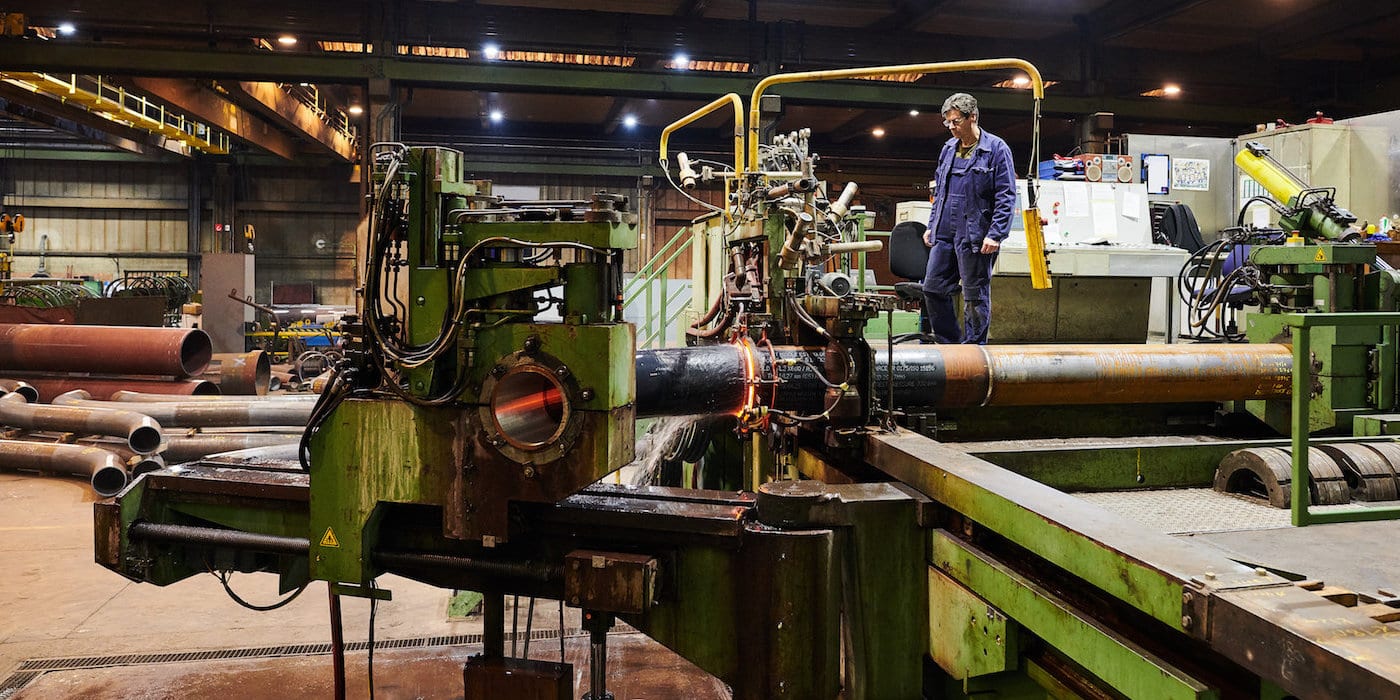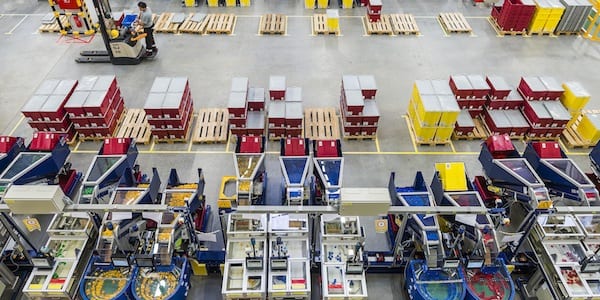
Lean turnaround – charting a new course
FEATURE – In business, the word “turnaround” refers to radical changes in the direction a company is moving toward. Here’s why Lean Thinking can increase the chances of success of such endeavors.
Words: José Ferro, Founder, Lean Institute Brasil
The term “turnaround” first appeared in the business world a few decades ago. Originally, its meaning was mostly tied to a company’s financial results, a way to invert a negative trend in performance. Historically, this meant making dramatic cost-cutting efforts and/or achieving revenue growth to allow the organization to return to financial profitability.
Most recently, this expression has come to mean a radical change in strategy or business model, not necessarily linked to an unsatisfactory financial performance the organization is wishing to tackle. A turnaround currently tends to be seen more as an effort to establish a new vision or a new direction for the business, to ensure its viability in the future.
This new direction may require the introduction of new products that are very different from the ones that are currently on offer, the search for completely new markets (or even their creation), new business models, new forms of distribution, or simply new forms of management and organization.
We can therefore say that a turnaroundis a process of organizational transformation towards a new direction, a new vision of the company, a new True North.
KAIZEN MAY NOT BE ENOUGH
Turning a company around might become necessary, as a result of the changes in the market and environment. There can be social changes, for example: these can occur at any time, as new demographics change the composition of the population and, with it, the values, desires and expectations of individual consumers. Another catalyst of change is new technologies (in particular, digital ones), which constantly create new possibilities for adding value. There is also competition that seems to be fiercer and more ubiquitous with every day that goes by: no one is safe, not even established companies in traditional, stable sectors. Whether it comes from suppliers or startups, competition is making for increasing instability and uncertainty.
In the face of such turmoil, the processes of continuous improvement (kaizen) may not be sufficient to ensure sustainable success. These days, change occurs abruptly and at enormous speed, which makes it necessary for companies to think creatively, “out of the box”.
Traditional strategy planning and deployment (hoshin kanri) must contemplate strategic challenges and opportunities and establish the necessary reorientations and new initiatives accordingly. Responsive and flexible as this process may be, however, it still might not achieve the articulation, alignment, and involvement from everyone that is needed.
If improving a company’s products and processes through kaizen is not be enough, it’s clear that we need start thinking in terms of a turnaround, a radical change in vision and direction.
LEAN, THE FOUNDATION OF A SUCCESSFUL TURNAROUND
The lean transformation itself makes for a great turnaround. If successful, it represents a profound change in the way people think and act at all levels of the organization and puts emphasis on improving processes (including product development), developing people’s skills and capabilities, and changing the leadership style and management system. The focus of a lean company is on consistently creating more value for the customer by optimizing the use of resources.
The development of people and leaders to implement the new management practices introduced by Lean Thinking generates a cultural shift that gives greater power to the front line and to those who are creating value for customers, breaking with the philosophy of command-and-control typical of traditional management. This, in turn, enables continued business growth and expansion thanks to a much better use of existing resources.
Countless organizations have been able to achieve extraordinary results in all areas of the business by embarking on a lean transformation. An example is the Instituto Oncológico do Vale (IOV), a Brazilian oncology clinic that, by introducing Lean Thinking in all its processes, has managed to radically change its performance. They were able to serve many more patients, substantially improve the quality of care, increase the satisfaction of employees, and generate positive results for the organization overall.
The major driver of IOV’s turnaround was a change in the management processes and in the way of thinking and doing things of leadership and all employees, which greatly impacted patient care and business results.
Even very mature lean companies often need a strategic reorientation. For instance, Toyota - the North Star and continuous source of inspiration for lean thinkers - has found itself in the position of having to rethink its direction.
For many years, it has been a leader in the automotive market in terms of both volume and profitability, and a pioneer in technological innovations. Until recently, Toyota has led the industry with new products and services. The development of its production system (TPS) and its management system (Toyota Way) is what put the company in the top spot. Yet, the company today is undergoing a radical transformation in the face of four simultaneous game-changing trends in the automotive industry (referred to as CASE – Connectivity, Autonomy, Sharing and Electrification):
- Greater vehicle connectivity makes it possible to add more value to customers and also represents new potential sources of income for companies;
- Vehicles are increasingly being designed to operate independently of a driver, thus freeing up their time and making their journey smoother and much more peaceful;
- People are less and less interested in owning a vehicle. Instead, they prefer calling or renting one as needed. Buying a vehicle is no longer a given for everyone;
- Electric vehicles are replacing traditional combustion-engine models and even hybrids.
The solutions behind these four trends have not come from traditional automotive companies, but from players like Tesla, Microsoft, Apple, Google, Uber, and countless other startups (Rivian or Nicola). These organizations have very different business models and product visions that have been shaking up an industry that had not undergone radical transformations for over 100 years ago.
Tesla briefly surpassed Toyota in mid-2020 in market value, even though it had less than 10% of Toyota’s production volume. Since the beginning, Tesla has been more aggressive in its strategy of offering electric vehicles with greater connectivity, even if the quality perceived by the customers is the worst in the North American market. (JD Power, 2001). As a result, Toyota has been forced to completely rethink its vision and direction – from a company that produces vehicles to a provider of mobility solutions. For this, it will need to develop new services and products (which goes to show the huge importance of LPPD – lean product and process development – in allowing a company to develop winning products to make its future sustainable).
Here in Brazil, for example, Toyota has created a new company, Kinto Share, that offers car rental services directly through some of its dealerships. (As an Uber shareholder, after all, Toyota has access to the company’s practices, data, and knowledge.)
In fact, the company has been developing a whole range of mobility solutions for passengers in the urban environment.
One of its most important initiatives is the creation of a 175-acre smart city, called Woven City, in Japan with an interconnected ecosystem in which various technological trends, from robotics to artificial intelligence, and various modes of mobility and sustainable transportation will come together in a set of real-life experiments that might redefine life in cities.
The digital transformation occupies an increasingly prominent spot in the agenda of large companies around the world, as investors and management boards push for the adoption of new practices in the use of technologies and in the way of an organization is run.
Digital company BRQ Digital Solutions is fully aware of this. It is working to achieve its own lean turnaround and a substantial change in its strategic vision in order to be able to support its clients in their own lean digital transformations.
If BRQ wants to become a key player in the digital transformation field, it will need to undergo a number of fundamental changes in its processes, products, staff training, and in the management style and role of its leaders. In essence, it will need to achieve a lean turnaround so it can help its customers do the same.
A lean turnaround is therefore a turnaround process that leverages the principles and strengths of Lean Thinking, including:
- An obsession with delivering value to customers;
- Greater ability to solve problems, including customers’ problems;
- Integrated horizontal processes focused on delivering value to customers;
- Constant learning and experimentation;
- Fast learning.
Boosting a company’s problem-solving capabilities is essential to develop the solutions that will meet the new needs of society and solve new customer problems. Solving problems better results from an organization’s ability to perform fast experiments and learn quickly from both successes and failures.
In such a scenario, the management system in place might also need to be revisited. The hoshin kanri process (strategy deployment) might need to allow for more frequent adjustment cycles in the daily management system (the C and A in PDCA), to reflect the speed at which customer expectations and requirements can change nowadays.
THE ROLE OF LEADERSHIP IN A LEAN TURNAROUND
A lean turnaround will require leadership to assume a new role and to develop an ability to understand new scenarios and identify the new direction in which the company should move. Decision making will continue to occur under conditions of limited information and very frequent changes.
Leadership will need to deepen its understanding of customer needs and develop products and processes that start from those needs and move backwards – that is, determining the new needs of customers and adapt its processes and offering accordingly, instead of just seeking to make a better use of existing assets and knowledge.
Management must have a gemba attitude (they need to want to see the work with their own eyes), a keen and critical sense of observation in the face of facts and data, and a clear understanding of the new trends and expectations of existing and potential customers. It’s the only way to develop products and processes capable to meet those expectations. This calls for a solid grasp of the customer journey and of the things that delight or disappoint customers, so that experimentation can take place and challenge new solutions to be more successful at a time when uncertainty reigns.
Leadership must then articulate the new vision in a simple, clear, motivating, and attractive way from the point of view of customers and the business and explain the new value proposition in the long term (knowing that the pace of change makes even the long term short). Once the new vision is defined, leadership will still have to translate it into a short-term strategy (1-2 years) and clearly explain what this means for each area, process and employee. In short, it needs to establish a turnaround plan aligned with the leadership, deploying it to all relevant processes and areas.
It is the role of leadership to always challenge the status quo, to be permanently dissatisfied, to have a provocative mind, and to create a culture of overcoming challenges and obstacles, in addition to setting high goals. It must seek to create a small-company mindset, regardless of the size of the organization and its current products and processes, in which the orientation is not towards existing assets but towards breaking through and succeeding.
Success in designing and carrying out bounded experiments for results, learning, and scaling is vital for the future of businesses. Start by performing a new experiment every day, reinventing something every day, looking to chart a new course for the business going forward. Lean Thinking equips leadership with the tools and mindset it needs to get a company there.
This article was based on my presentation in the Webinar “Leading with respect: How Lean leadership promotes a turnaround in business” (in Portuguese) organized by the Lean Institute Brasil in June 2020 and hosted by Robson Gouveia, with presentations by Carlos Frederico Pinto, from Instituto Oncológico do Vale (IOV), and Benjamin Quadros, from BRQ Digital Solutions.
Source: Lean Institute Brasil
THE AUTHOR

Read more


FEATURE – This Dutch company decided to start its lean journey by involving its suppliers in the improvement work. We hear from both customer and supplier.


INTERVIEW – Planet Lean meets LEGO’s Ilona Takács to learn how the toy manufacturer looked at its corporate values to built a new, super-lean factory in eastern Hungary.


FEATURE - What do Toyota and Procter&Gamble have in common? A passion for developing people, a focus on customer satisfaction, and... enviable results that are sustained over time.


WOMACK’S YOKOTEN – If truly embraced, lean thinking sustains and (in the long run) even creates jobs, but if a transformation is to last these jobs must be “good,” says Jim Womack.

